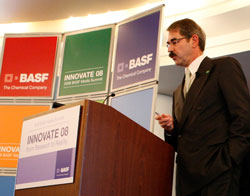 Dr. Hans Kast, President/CEO, BASF Plant Science Holding GmbH, spoke at this week’s Media Summit about plant biotechnology and the work the company is doing in R&D. Picture courtesy of Carl Cox Photography.
Dr. Hans Kast, President/CEO, BASF Plant Science Holding GmbH, spoke at this week’s Media Summit about plant biotechnology and the work the company is doing in R&D. Picture courtesy of Carl Cox Photography.
On the subject of plant biotechnology, Dr. Hans Kast, President and Chief Executive Officer of BASF Plant Science, indicated that the research and development focus for BASF Plant Science is concentrated in three areas – more efficient agriculture, renewable raw materials and healthier nutrition for humans and animals. “BASF Plant Science has a unique technology platform to support our gene discovery work in these areas,” said Kast. “It combines phenotypic screening with high throughput metabolic profiling to determine gene function, which has led to a broad and diversified early stage pipeline of lead genes.”
You can listen to and download his remarks here:  Dr. Hans Kast Remarks (15 min MP3)
Dr. Hans Kast Remarks (15 min MP3)
Or listen to them here now:basf-media-summit-9.mp3


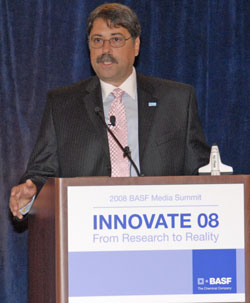 Marcus Heldt is Group Vice President, North America, Crop Protection Division, for BASF. He spoke at this week’s Media Summit about how the company is putting innovative knowledge gained in marketing to one crop area to use in targeting other market segments.
Marcus Heldt is Group Vice President, North America, Crop Protection Division, for BASF. He spoke at this week’s Media Summit about how the company is putting innovative knowledge gained in marketing to one crop area to use in targeting other market segments. One of the questions I get asked very often is, “How can you make money with new media?” If you read AgWired often then you probably have a good idea of some of the ways that can happen.
One of the questions I get asked very often is, “How can you make money with new media?” If you read AgWired often then you probably have a good idea of some of the ways that can happen.
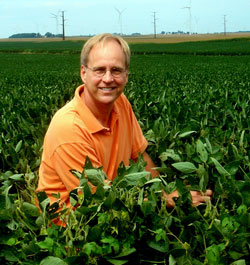
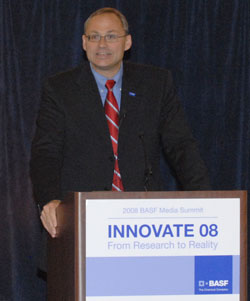 Dr. Peter Eckes spoke at the BASF Media Summit about how the company is turning science into innovation in the Crop Protection division.
Dr. Peter Eckes spoke at the BASF Media Summit about how the company is turning science into innovation in the Crop Protection division.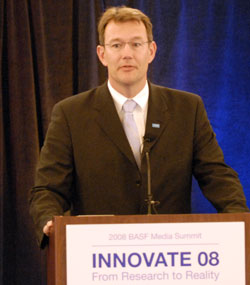 One of our speakers at the BASF Media Summit was Michael Heinz, President of BASF’s Crop Protection Division. He focused on the business aspects of how well his division is performing and what the future holds.
One of our speakers at the BASF Media Summit was Michael Heinz, President of BASF’s Crop Protection Division. He focused on the business aspects of how well his division is performing and what the future holds. Swine producers are invited to an
Swine producers are invited to an  Before I had even left Washington, DC I was being asked, “Chuck, where are you going next?” Well, I’m going on a Real Life Tour. In fact, it’s Michael Peterson’s
Before I had even left Washington, DC I was being asked, “Chuck, where are you going next?” Well, I’m going on a Real Life Tour. In fact, it’s Michael Peterson’s